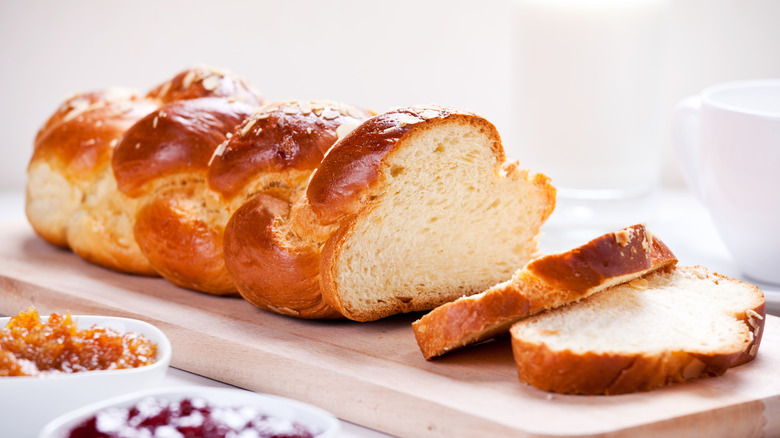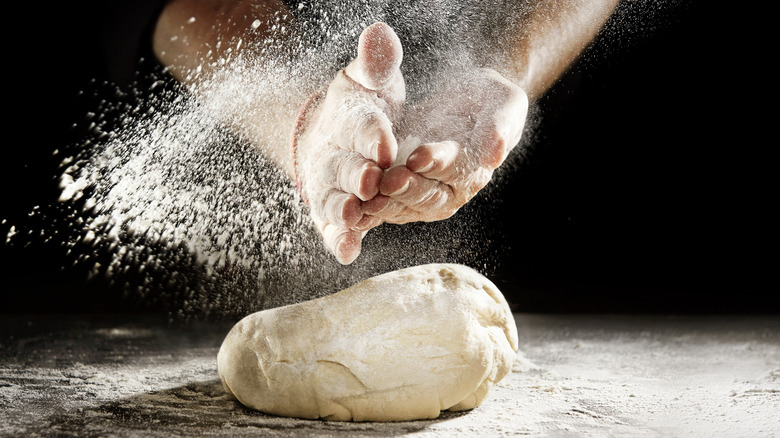What Is The Sponge Method For Making Butter Bread?
Some of the most flavorful bread in the world comes to us from the enriched dough. What does this mean? According to FoodAL, yeasted bread doughs are split into two distinct categories: lean and enriched. Lean bread doughs often contain little to no fat. Think ciabatta, pita, or classic sourdough boule. Conversely, enriched bread doughs are those that are very high in fat. The enriching fats vary amongst eggs, milk, olive oil, and butter. Examples of enriched doughs include staples such as hamburger buns, pizza dough, dinner rolls, and flatbread, as well as holiday classics like German stollen and Italian panettone, per Knead Rise Bake.
Adding fat to the dough improves the flavors and gives the bread a soft, light, buttery texture. This is why certain types of enriched breads are referred to as butter bread. According to MasterClass, butter bread is wheat bread that has been specifically enhanced by adding copious amounts of butter. The fats transferred to the dough add sweetness and shorten the gluten strands, imparting the bread with its characteristic airiness. While several different recipes and methods exist for making butter bread, one technique leads to bread with fantastic flavor complexity. The approach in question is called the sponge method, and it is a way of kickstarting the fermentation process.
Sponging in flavor
The concept behind the sponge method is to create a starter or pre-ferment. According to Britannica, in the mass production of enriched bread, the sponge is made of about ½ to ¾ of flour, the entirety of the yeast, yeast foods like salt or sugar, and plenty of water to make the sponge stiff. It's then mixed to allow the gluten time to form and stretch. This process is easily transferable to home baking. The sponge is continually kneaded during the mixing process until it reaches a stage where light can easily pass through it. This is called the window-pane test. Only once the sponge has reached this point can the remainder of the ingredients be added. Any remaining flour is mixed in, along with the butter, via MasterClass.
The sponge allows the dough a head start in the fermentation process. As with traditional sourdough, getting the bread to ferment and stretching the gluten enables a complexity of flavors to develop. This method can be used when making any type of butter bread, such as brioche or challah. It's advisable to chill your dough during its initial rise as the butter fats weaken the already stretched gluten molecules, making it very difficult to knead and shape at room temperature.

